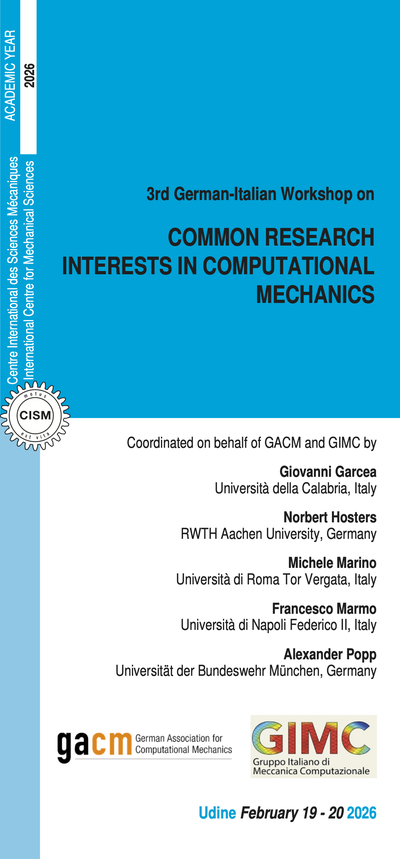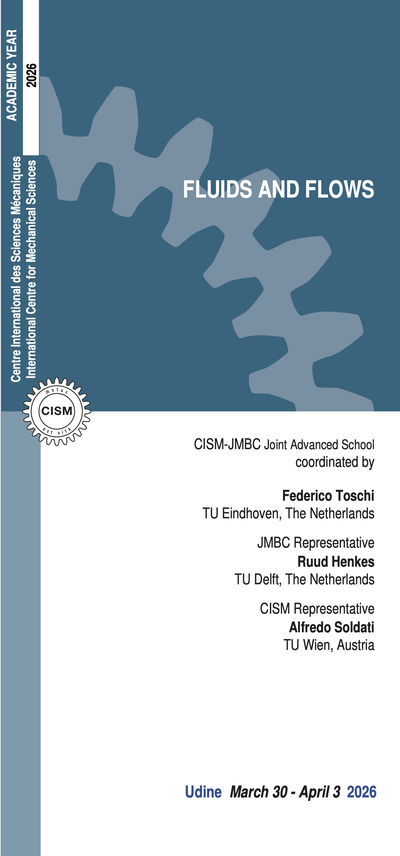Multiphase flows are ubiquitousin nature and industry. Examples include oil extraction/ separation in the oil & gas industry, airborne particles or aerosols, sediment-laden flows, fiber suspensions, but also swimming microorganisms, biopolymers and blood rheology. The numerical description of multiphase flows is a complex task that requires an accurate representation of the mutual interaction between the involved phases, which can be solid particles, liquid/gas layers or droplets/bubbles depending on the specific application. Even in the idealized scenario of dilute suspensions of pointlike particles, inertia leads to non-trivial behaviors, such as multiscale clustering typically observed in the turbulent regime. With increasing levels of concentration, the two-way coupling between the phases becomes manifest, for both momentum and energy. This coupling can be enhanced by collective effects, e.g. leading to cluster-induced turbulence, or by finite-size effects, when particles are significantly larger than the Kolmogorov scale of the flow. Shape effects may represent an important source of bias that adds to inertia in determining the macroscopic flow behavior.
Difficulties in modeling and simulation arise also in the presence of an interface between the continuous and dispersed phases, which may produce sub-Kolmogorov length and time scales near the interface. In this case, two main approaches can be adopted: The first one exploits deformable, boundary-fitted grids that adapt to the dynamics of the interface (but require definition of appropriate boundary conditions on it); the second one makes use fixed grids to describe the dynamics of the entire flow field, plus the addition of an independent representation of the interface, via both Lagrangian or Eulerian methods, such as Front-Tracking, Volume-Of-Fluid (VOF), Level-Set (LS), Phase- Field (PF) or Smoothed Particle Hydrodynamics (SPH). In this latter case, a redistribution of interface forces/effects on the background fixed grid is necessary.
In this course, we will present and discuss the numerical models/ methods currently available for the accurate simulation of turbulent multiphase flows. In particular, we will consider: Lagrangian methods for particle dispersion in turbulence (with and without finite-size effects), boundary-fitted methods for deformable gas and liquid layers, and commonly-used approaches such as VOF, LS, PF and SPH approaches. A comprehensive ensemble of applications, extracted from the lecturers’ own research field and covering areas of applied physics and engineering, will also be provided together with a hands-on computer session by Dr. Alessio Roccon and Dr. Giovanni Soligo.
The course will be particularly attractive to graduate students, PhD candidates, young researchers and faculty members in applied physics and chemical/mechanical engineering. The advanced topics and the presentation of current progress will also be of considerable interest to many senior researchers, as well as industrial practitioners having a strong interest in understanding the complex multiscale flow behavior, with particular emphasis on their modeling and simulation.
G.A. Voth, A. Soldati (2017) Anisotropic Particles in Turbulence, Annu. Rev. Fluid Mech., 49, 249-276.
S. Pirozzoli (2011) Numerical methods for high speed flows, Annu. Rev. Fluid Mech., 43, 163-194.
R. Mittal, G. Iaccarino (2005) Immersed boundary method, Annu. Rev. Fluid Mech., 37, 239-261.
A. Soldati, C. Marchioli (2009) Physics and modeling of turbulent particle deposition and entrainment: review of a systematic study’’, Int. J. Multiphase Flow, 35, 827-839.
S. Balachandar, J.K. Eaton (2010) Turbulent dispersed multiphase flow. Annu. Rev. Fluid Mech., 42, 111-133.
S. Popinet (2018) Numerical models of surface tension. Annu. Rev. Fluid Mech., 50, 49-75.
J.A. Sethian, P. Smereka (2003) Level set methods for fluid interfaces. Annu. Rev. Fluid Mech., 35, 341-372.
J.-P. Minier & J. Pozorski (Eds.) Particles in wall-bounded turbulent flows: Deposition, resuspension and agglomeration, CISM International Centre for Mechanical Sciences Book 571.
G. Soligo, A. Roccon, A. Soldati (2019) Breakage, coalescence and size distribution of surfactant-laden droplets, J. Fluid Mech., 881, 244-282.
P. Costa, F. Picano, L. Brandt (2018) Effects of the finite particle size in turbulent wall-bounded flows of dense suspensions J. Fluid Mech., 843, 450-478.
A. Roccon, F. Zonta, A. Soldati (2019) Turbulent drag reduction by compliant lubricating layer, J. Fluid Mech., 863, R1.
F. Zonta, A. Soldati, M. Onorato (2015) Growth and spectra of gravity-capillary waves in countercurrent air/water turbulent flow, J. Fluid Mech., 777, 245-259.
4 lectures on: The Level Set method for multiphase flows. Conservative Level Set formulation. Application to super-hydrophobic and liquid infused surfaces.
4 lectures on: Euler-Lagrange modelling and simulation of point-particles particles in turbulence. Phenomenology of particle-turbulence interactions. Sources of bias due to particle shape, flexibility and motility. Breakup of particle aggregates in bounded turbulence.
4 lectures on: Modelling and numerical simulation of finite-size particles in wall-bounded turbulence, with application to sedimentation and shear flows. The Immersed Boundary method. Extensions to non-spherical particles and applications to dispersed multiphase flows.
4 lectures on: Numerical methods for turbulent flows. Energy- preserving discretizations: Finite Difference methods for DNS of incompressible and compressible flows. Numerical issues in DNS and LES. Volume of Fluid methods for multiphase flows.
3 lectures on: The Smoothed Particle Hydrodynamics method for two-phase flows: Governing equations, applications to multiphase flows with interfaces.
3 Lectures on: Modeling approaches to simulate interfaces, drops and bubbles in turbulence. The Phase Field approach: Fundamentals and applications.
4 Lectures on: Modeling and Direct Numerical Simulation of multiphase flows: (1) two-phase systems employing sharp-interface approach; (2) DNS of multiphase stratified flows in channels with the Phase Field method.
The registration fee is 600.00 Euro + VAT*, where applicable (bank charges are not included). The registration fee includes a complimentary bag, four fixed menu buffet lunches (on Friday upon request), hot beverages, downloadable lecture notes and wi-fi internet access.
Applicants must apply at least one month before the beginning of the course. Application forms should be sent on-line through the following web site: http://www.cism.it. A message of confirmation will be sent to accepted participants. Applicants requiring assistance with the registration should contact the secretariat at the following email address: cism@cism.it.
Cancellation requests received during the two weeks prior to the start of the course will be charged a 50.00 Euro handling fee. Incorrect payments are also subject to a 50.00 Euro handling fee.
A limited number of participants from universities and research centres who are not supported by their own institutions can be offered lodging and/or board, if available, in a reasonably priced hotel or student guest house.
Requests should be sent to CISM Secretariat by July 31, 2020 along with the applicant's curriculum and a letter of recommendation by the head of the department or a supervisor confirming that the institute cannot provide funding. Preference will be given to applicants from countries that sponsor CISM.
Information about travel and accommodation is available on the web site www.cism.it, or can be mailed upon request.
* Italian VAT is 22%.





